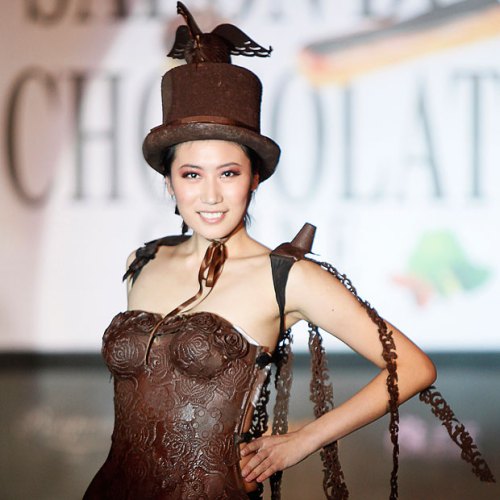Chocopedics is the medicinal application of chocolate. In most cases, the medicinal use of chocolate is self-prescribed and self-administered. People tend to know instinctively when chocolate, as a cure or analgesic, is required without having to resort to the intervention of a physician. As an aid to chocopedics, several companies make chocolate bars flavoured with ingredients specially chosen for their health benefits. Belgian company New Tree produce a Lavender-flavoured bar “to relax and inspire”, and a ginger-flavoured bar to “revitalize”.
English company Feeding Your Imagination used to produce chocolate bars with names like Sensual, infused with sweet orange, nutmeg and chilli for “soothing relaxation”; and Lovely, a “tummy loving” bar made with essential oils of peppermint to aid digestion, and cardamom for softness.
All chocolate affects the mind and body and although a lot of it is more of a treat than a medicinal pick-me-up, the greatest mood-lifter in the world is still a beautifully designed box filled to the brim with irresistible truffles, ganaches and pralines. In the immortal words of Hollywood actress Alicia Silverstone: “My favourite thing in the world is a box of fine European chocolates which is, for sure, better than sex”.
American blogger ‘Florida Fruit Geek’ best encapsulated the medicinal value of chocolate (both physical and mental) when she wrote there was “something about chocolate and cocoa [that] can touch us deep in our emotional core. For many people, during an emotional upset, the only thing that seems to help is chocolate”. And, later, in one of her journal entries, albeit half-jokingly, described her feelings about chocolate as something between physical addiction, psychological addiction, and religious ecstasy.
In Why Women Need Chocolate (1995), author Debra Waterhouse writes that chocolate contains more brain-pleasing chemicals than any other foodstuff we know. There’s Phenylethylamine, a mood-enhancer also known as the ‘love drug’ because of its postulated role in falling in love. There’s Theobromine, a caffeine-like stimulant. There’s Tryptophan, a known relaxant. And there’s Anandamide, a mood enhancer. Ananda means ‘indescribable bliss’ in Sanskrit. Judging by some women’s experience of chocolate, indescribable bliss is not too far from what they actually get from it. In addition, chocolate has been shown to trigger the body’s own opiates and endorphins. Most researchers conclude that these mood-enhancing chemicals are not present in large enough quantities to have a significant effect, and put the pleasing effects of chocolate down to its ‘naughty but nice’ associations – i.e. to the Milk Tray Approach.
See also: Chocolate-on-the-sofa-phase.
.

Better than sex?


